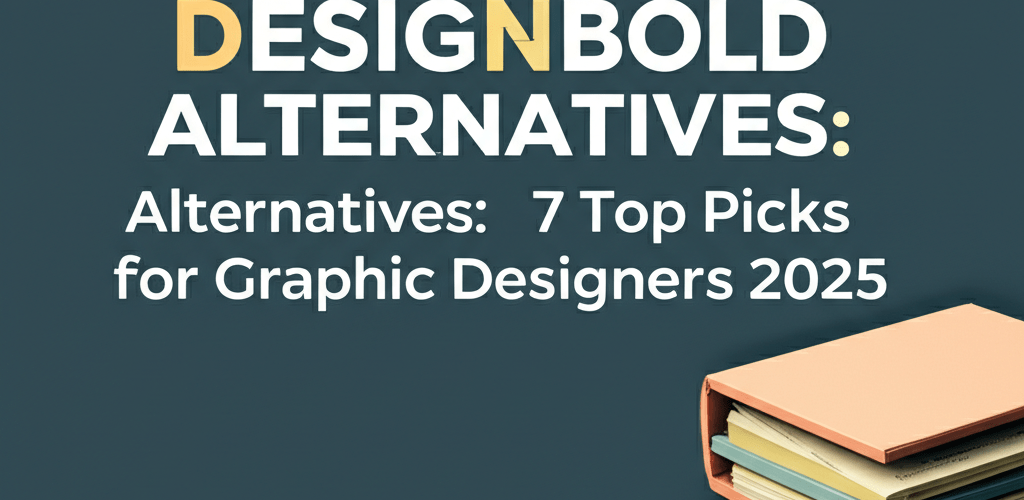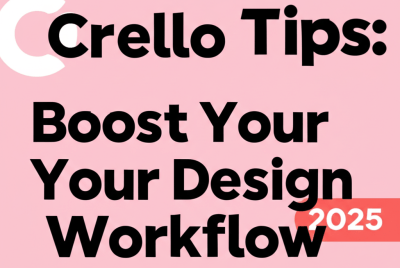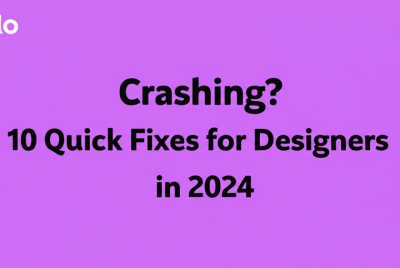Which DesignBold Alternatives Are Best for Graphic Designers in 2025?
Looking for a fresh graphic design tool beyond DesignBold? You’re in the right place! We’ll help you navigate the options to find your perfect creative companion. Here’s a quick rundown of what we’ll cover:
- What is DesignBold? It’s an online platform known for user-friendly templates, great for beginners.
- Top Alternatives: We’ll explore Canva, Adobe Express, Figma, Affinity Designer, GIMP, and Inkscape.
- Canva & Adobe Express: Excellent choices for quick social media graphics and easy design.
- Figma: Your go-to for collaborative UI/UX and prototyping projects.
- GIMP & Inkscape: Powerful, free open-source options for detailed image editing and vector graphics.
- Affinity Designer: A robust, professional suite available with a one-time purchase.
- Choosing Your Tool: Key factors to consider for your specific design needs.
What exactly is DesignBold and who is it for?
DesignBold is an online graphic design platform, great for anyone who wants to create professional-looking visuals without needing a ton of design software know-how. It’s packed with templates, stock photos, and design elements to help you whip up everything from social media posts and presentations to flyers and invitations. Think of it as a friendly starting point, making design accessible to a broad audience.
However, as your creative needs evolve, you might find yourself looking for DesignBold alternatives that offer different features, pricing, or a more specialized focus.
What are the top DesignBold alternatives graphic designers are using in 2025?
The top DesignBold alternatives are a diverse bunch, offering everything from simple drag-and-drop interfaces for beginners to advanced features for seasoned pros. These graphic design tools come with unique functionalities, extensive template libraries, and various integrations to match almost any creative project.
Which DesignBold competitors offer the best features for various design needs?
When you’re comparing DesignBold competitors, think about what you really need, your budget, and your current skill level. Here’s a snapshot of some excellent choices:
- Canva: Unbeatable for ease of use and its massive template library.
- Adobe Express: Fantastic for quick social media visuals and seamless integration with other Adobe tools.
- Figma: Perfect for UI/UX design and real-time team collaboration.
- Affinity Designer: A professional, powerful design suite you buy once.
- GIMP: A robust, free, open-source choice for detailed image editing.
- Inkscape: Superb for creating professional-grade vector graphics without the cost.
Why is Canva often considered the best free DesignBold alternative?
Canva consistently comes up when we talk about free DesignBold alternatives. This popular platform shines with its super intuitive drag-and-drop interface, making graphic design approachable for literally everyone. Canva boasts an enormous library of templates for almost any design task – social media, presentations, marketing materials, and more. Its free version is surprisingly generous, giving you access to millions of stock photos, illustrations, and fonts, plus all the essential editing tools.
Many see Canva as the ultimate DesignBold competitor because they share a similar audience and focus on ease of use. It’s ideal for small businesses, marketers, and individuals who need eye-catching content fast, without a steep learning curve. The Pro version takes it up a notch with brand kits, a background remover, and team collaboration tools, cementing its spot as a top-tier design app. If you’re curious about how these compare to more robust tools, our guide on DesignBold vs. Photoshop offers further insights.
How does Adobe Express stand out as a powerful DesignBold alternative for quick designs?
As another strong option among the best DesignBold apps, Adobe Express (which you might remember as Adobe Spark) offers a powerful yet straightforward design experience. It’s especially handy if you’re already using other Adobe products, thanks to its smooth integrations. You’ll find an impressive range of templates for social media graphics, flyers, logos, and web pages. What makes Adobe Express special is how well it works with tools like Photoshop and Illustrator, ensuring a seamless workflow if you use those professional creative suites.
Adobe Express is a fantastic choice for creating dynamic and engaging content quickly. Its quick action tools, like image resizing, video editing features, and access to Adobe Stock photos, make it a truly versatile DesignBold alternative. While its free tier is excellent, a premium subscription unlocks even more advanced features and the full Adobe Stock library. For designers who started as DesignBold beginners, these accessible apps offer a smooth transition and enhanced features.
Is Figma a good DesignBold alternative for UI/UX and team collaboration?
Figma might not be a template-focused design tool like DesignBold, but it’s a major DesignBold competitor if your work involves UI/UX design and collaborative projects. Figma is a cloud-based design and prototyping tool that lets teams work together in real-time, making it invaluable for product design, wireframing, and interactive prototypes. Its real power lies in its collaborative features and precise vector editing, giving you incredible control over design elements. Mastering these tools, much like picking up useful DesignBold tips, can unlock a new level of creative flow.
If your design projects lean towards creating responsive website layouts, mobile app interfaces, or team-based branding, Figma is an unparalleled DesignBold alternative. It might take a bit more effort to learn than DesignBold, but the professional output and efficiency gained from its team-centric features are huge.
Can GIMP serve as a truly free DesignBold alternative for advanced image editing?
For advanced image manipulation and working with raster graphics, GIMP (GNU Image Manipulation Program) shines as a powerful free DesignBold alternative. Often called a free Photoshop alternative, GIMP provides a comprehensive set of tools for photo retouching, image composition, and creation. While its interface might take a little getting used to, its depth of features rivals many professional paid applications.
Unlike DesignBold’s focus on quick template use, GIMP gives you granular control over every aspect of an image. If you’re diving into complex photo editing, crafting digital paintings, or need advanced layer management, GIMP is an exceptional choice. It’s a fantastic option if you’re ready to move beyond simpler tools and need professional-grade image editing without the price tag. You can learn more about different file formats in graphic design to better understand GIMP’s capabilities.
How does Affinity Designer compare to DesignBold for professional graphic design?
For designers seeking a more professional and robust solution, comparing DesignBold vs. Affinity Designer is a key consideration. Affinity Designer, created by Serif, is a powerful vector graphic design software available as a one-time purchase. It offers advanced features, precise controls, and excellent performance, making it a strong contender for those who need more than basic template-based design. It’s often debated in discussions about AMD or Intel processors for graphic design due to its demanding nature.
While DesignBold excels at quick, template-driven projects, Affinity Designer allows for a much deeper dive into illustration, UI design, and photo manipulation. It’s especially appealing to users ready to level up from entry-level tools. The learning curve is steeper, but the creative freedom you gain is significantly greater.
When should you choose Inkscape over DesignBold for vector graphics?
Another excellent open-source choice for vector graphics is Inkscape. When you’re looking at DesignBold vs. Inkscape, you’re really looking at two different approaches. DesignBold prioritizes ease of use with pre-made templates and a drag-and-drop interface, perfect for quick marketing materials. For a deeper understanding of vector images, check out our guide on vector image file types explained.
Inkscape, on the other hand, is a professional-grade vector graphics editor. It empowers you to create highly detailed illustrations, complex path manipulations, and scalable vector graphics. While it requires more technical knowledge, it’s an incredibly powerful free DesignBold alternative for intricate vector work and a favorite among many developers and illustrators.
What key factors should you consider when choosing a DesignBold alternative?
Picking the right graphic design tool means finding the perfect match for your evolving needs. Here are essential factors to think about as you explore DesignBold alternatives:
- Ease of Use: Do you need a drag-and-drop interface for fast designs, or are you ready to learn more complex software for greater control? Consider your skill level and how much time you’re willing to invest, much like growing as a graphic designer takes dedication.
- Feature Set: What specific features are non-negotiable for your work? This could be advanced vector editing, photo manipulation, animation, or simply a robust template library.
- Cost: Are you aiming for a free DesignBold alternative, a one-time purchase like Affinity, or a subscription service? Your budget and the value offered are key.
- Collaboration: If you work with a team, real-time collaboration features (like those in Figma or Canva Pro) are often essential.
- Integrations: Think about how well the tool plays with other software you use, such as cloud storage, social media platforms, or other creative suites (like Adobe Express with Adobe Creative Cloud).
- Template Library & Assets: The quality and quantity of pre-designed templates, stock photos, fonts, and icons can significantly speed up your workflow and provide inspiration for eye-catching designs.
- Learning Curve: Honestly assess how much time you’re willing to commit to mastering a new tool. Some alternatives offer instant productivity, while others demand a greater investment of time and effort.
Key Takeaways for Your Design Tool Search
The market is full of powerful DesignBold alternatives, each bringing unique strengths to your creative table. There’s truly a perfect tool out there, whether you prioritize ease of use, advanced professional features, collaborative capabilities, or a budget-friendly free option.
From the intuitive simplicity of Canva and Adobe Express for daily graphics, to the professional depth of Affinity Designer and Figma for specialized projects, and the open-source power of GIMP and Inkscape – your choices are vast. Thinking carefully about your specific design goals and workflow helps you confidently pick the platform that best supports your creative vision and helps you produce stunning visuals. Choose your next design companion wisely to boost both your design quality and your creative output!
Common Questions About DesignBold Alternatives
What is the main difference between DesignBold and its competitors?
The main difference usually comes down to how user-friendly it is, what features it offers, and its pricing model. Many DesignBold alternatives provide either a simpler, template-focused experience or a more advanced, feature-rich environment for professional design, often with varying costs or as free open-source options.
Are there completely free DesignBold alternatives available?
Yes, absolutely! There are several fantastic completely free DesignBold alternatives. GIMP (for raster graphics), Inkscape (for vector graphics), and the free tiers of Canva and Adobe Express all offer substantial design capabilities without any cost, making them excellent for individuals and small businesses.
Which alternative is best for creating social media graphics?
For social media graphics, Canva and Adobe Express are generally seen as the best DesignBold alternatives. This is because they have huge libraries of templates, super user-friendly interfaces, and easy direct sharing options to various social media platforms.
Authoritative External Resources:
- Adobe Creative Cloud for Graphic Design
- Wikipedia: Comparison of raster graphics editors
- Figma Design


